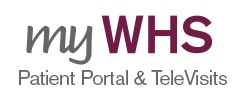
Dr. Alexander Olsen
Dr. Alexander Olsen is currently a second year Family Medicine resident at the Washington Health System. He was born and raised in the nearby North Hills of Pittsburgh. He attended the University of Pittsburgh studying Pre-med and Economics. Afterwards, he enrolled in the Lake Erie College of Osteopathic Medicine in Erie, Pennsylvania. When he isn’t studying, he enjoys spending time with his family and friends, as well as golf, tennis, and reading in his spare time.
Breast Cancer Awareness Month
According the World Health Organization breast cancer the most common cancer along woman or wide. In fact 1 and 8 women in the United States will be diagnosed with breast cancer in her lifetime. And on average every 2 minutes woman was diagnosed with breast cancer in United States. This year in 2020 and estimated 42,170 women unfortunately pass away due to breast cancer. Interestingly men can get breast cancer to in 2020 approximately 2620 men will be diagnosed with breast cancer. But despite all that there is good news; more than half of breast cancer cases are diagnosed at a localized stage (in other words there is no sign the cancer spread outside the breast) and at this stage 5 year survival rate is 99%. Death rates from breast cancer pending climbing since 1990 this is partly due to better screening methods that allow for early detection, increased awareness of the disease, and constantly improving treatments.
A little bit about screening:
Mammogram: A mammogram is an X-ray of the breast. Mammograms are the best way to find breast cancer early, when it is easier to treat and before it is big enough to feel or cause symptoms. Having regular mammograms can lower the risk of dying from breast cancer. At this time, a mammogram is the best way to find breast cancer for most women.
Breast Magnetic Resonance Imaging (MRI): A breast MRI uses magnets and radio waves to take pictures of the breast. MRI is used along with mammograms to screen women who are at high risk for getting breast cancer. Because breast MRIs may appear abnormal even when there is no cancer, they are not used for women at average risk.
Benefit of screening: The benefit of screening is finding cancer early, when it’s easier to treat.
Risks of screening: Harms can include false positive test results, when a doctor sees something that looks like cancer but is not. This can lead to more tests, which can be expensive, invasive, time-consuming, and may cause anxiety. Tests also can lead to overdiagnosis, when doctors find a cancer that would not have gone on to cause symptoms or problems, or even may go away on its own. Treatment of these cancers is called overtreatment. Overtreatment can include treatments recommended for breast cancer, such as surgery or radiation therapy. These can cause unnecessary and unwanted side effects. Other potential harms from breast cancer screening include pain during the procedure and radiation exposure from the mammogram test itself. While the amount of radiation in a mammogram is small, there may be risks with having repeated X-rays. Mammograms may also miss some cancers, called false negative test results, which may delay finding a cancer and getting treatment.
(Content source: Division of Cancer Prevention and Control, Centers for Disease Control and Prevention)


